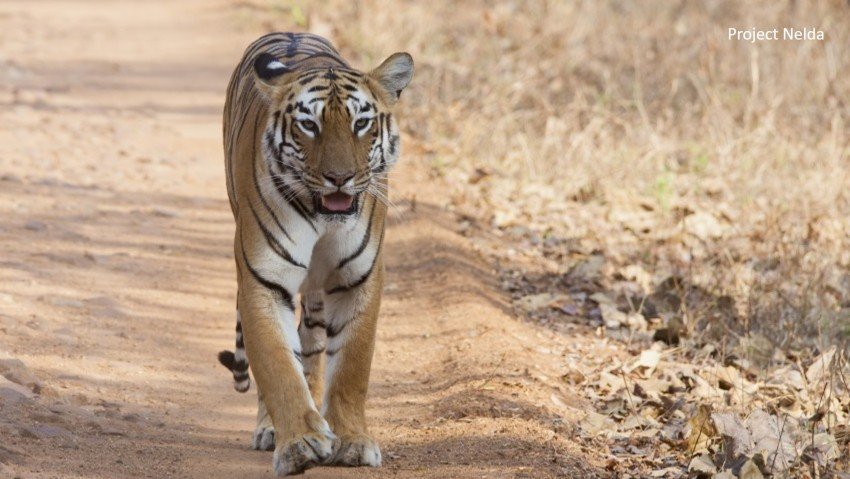India is blessed with beautiful natural landscapes and dense forests. However, we all know that the forest cover has been depleting at a fast pace. India’s forests now cover only 21.34% of the country. So it is essential for everyone to know where and how our forests stand. For us, these forests mean much more than just natural landscapes. These forests provide livelihood to animals and insects and allow trees to flourish without human interference. There is an independent life, apart from that of humans, and we want to respect that space wholeheartedly.
So today, we are going to brief through the Tadoba National Park, in Nagpur.
Located in Chandrapur district in Nagpur, Maharashtra, the Tadoba National Park is a flourished forest. It is a part of the Tadoba Andhari Tiger Reserve (TATR).
History
The word ‘Tadoba’ comes from the name of the God “Taru” or “Tadoba”. The ‘Andhari’ word comes from the Andhari river which flows in the region. Legend says that Taru was the village chief who succumbed to death in a mythological encounter with a tiger. Now a shrine exists beneath a huge tree on the banks of the Tadoba Lake as a dedication to God Taru. This little temple is frequently visited by Adivasis during the fair which is held every year between December and January.
This forest was declared as a National Park in 1995. The total area it covers is 116.55 sq. Km. The Andhari Wildlife Sanctuary combined with Tadoba National Park to form Tadoba Andhari Tiger reserve in 1995.
Flora
Tadoba reserve is a predominantly southern tropical dry deciduous forest with dense woodlands comprising about 87 percent of the protected area. Teak is the predominant tree species.
Other trees include Ain (crocodile bark), Bija, Dhauda Salai, Tendu, and Semal. Hirda, Karaya gum, Beheda, Mahua Madhuca (crepe myrtle) and Lannea coromandelica are other common species.
Axlewood is a fire-resistant species that also grows here. Palas, also known as the flame of the forest (Butea monosperma) adds vibrant colour to the Jungle. Black plum trees grow around the lake while huge Arjun trees are seen at the waterhole at Panchadhara.
There are many patches of grass and dense bamboo thickets found throughout the reserve. A climber known as Kach Kunjali is also seen here. This is a medicinal plant which is used to treat Parkison’s disease. Also, the leaves of Bheria can be used an insect repellent while Bija is a medicinal gum!
Fauna
The most popular species is, of course, the Royal Bengal Tiger. However, Tadoba Tiger reserve is home to many more mammal species. These include Indian Leopards, Gaurs, Sloth Bears, Striped Hyena, Nilgai, Small Indian Civet, Sambar, Barking Deer, Chital, Jungle Cats, Honey Badger and Chausingha.
The Tadoba lake also provides livelihood to the marsh crocodile, which were once commonly found all over Maharashtra.
The reptiles here include the Indian Python, which is an endangered species. It also is home to the Common Indian Monitor, Indian Star Tortoise, Russel’s Viper and Indian Cobra.
If you are into Ornithology, the Tadoba Lake is paradise for you. It has a vast diversity of water birds and raptors. There are 195 bird species on record as of now, including some of the endangered species. The Crested Serpent Eagle, Grey-headed Fish Eagle, and Changeable Hawk-Eagle are some of the raptors.
Other birds include Indian Pitta, Stone Curlew, Paradise Flycatcher, Orange-headed Thrush, Crested Treeswift, Black Drongo, Hoopoe, Lesser Golden-backed Woodpecker, Crested Honey Buzzard, Indian Roller and many more. Warblers and peacocks are some of the most sighted birds here.
When it comes to butterflies, Tadoba is proudly home to 74 butterfly species. Some of them are Monarch, Swordtails, Mormons, and Pansies.
The insect species here include Danaid egg-fly and great Eggfly, which are endangered. Dragonflies, Praying Mantis and Jewel Beetles are some other insects here at the reserve.
During monsoons, the most sighted spiders are the Giant Wood Spiders, Signature Spiders, and Red Wood Spiders. Some other hunting spiders also exist here, like the Crab Spider, Lynx Spider, and the Wolf Spider.
So, doesn’t this sound really exciting? If you want to visit this lovely forest, you can do so by booking a tour. There are various options available.
There are certain rules you HAVE to follow when you visit a jungle. Here are a few:
- Do not wear bright clothes. Go for dull coloured clothes so you can be camouflaged.
- Dress according to the season. During winters, make sure you layer clothes. Jungles are colder than urban areas. During summers, wear light clothes.
- While photographing anything, do not use your flash.
- Do not make chaos, you might scare the animals and birds.
- Do not litter.
- Do not wear any perfume/deodorant/body mist; it will attract insects. Animals have a strong smell sense; they will know your location and avoid crossing your paths.
- Do not irritate animals and birds.
- Do not try to feed any animal or bird.
- Do not step down from your vehicle.
- Avoid any loud physical actions, especially when an animal is close to your vehicle.
So go and visit the Tadoba National Park- this trip will definitely bring you closer to nature. But promise us you won’t cause any harm.
We at Nelda believe that there is no authority higher than that of nature and keeping our forests alive is the only way humans will live in the future. Join us in our efforts!

